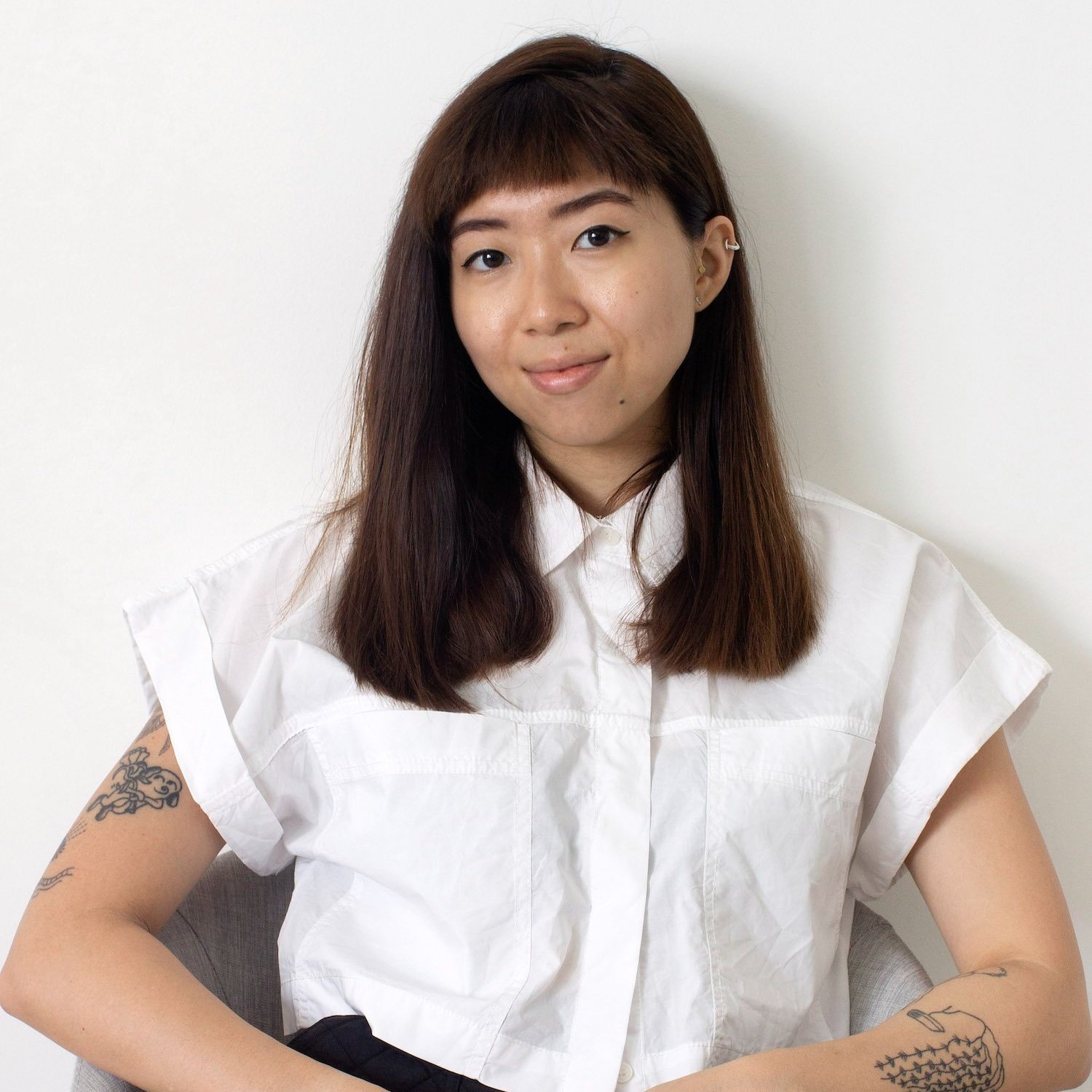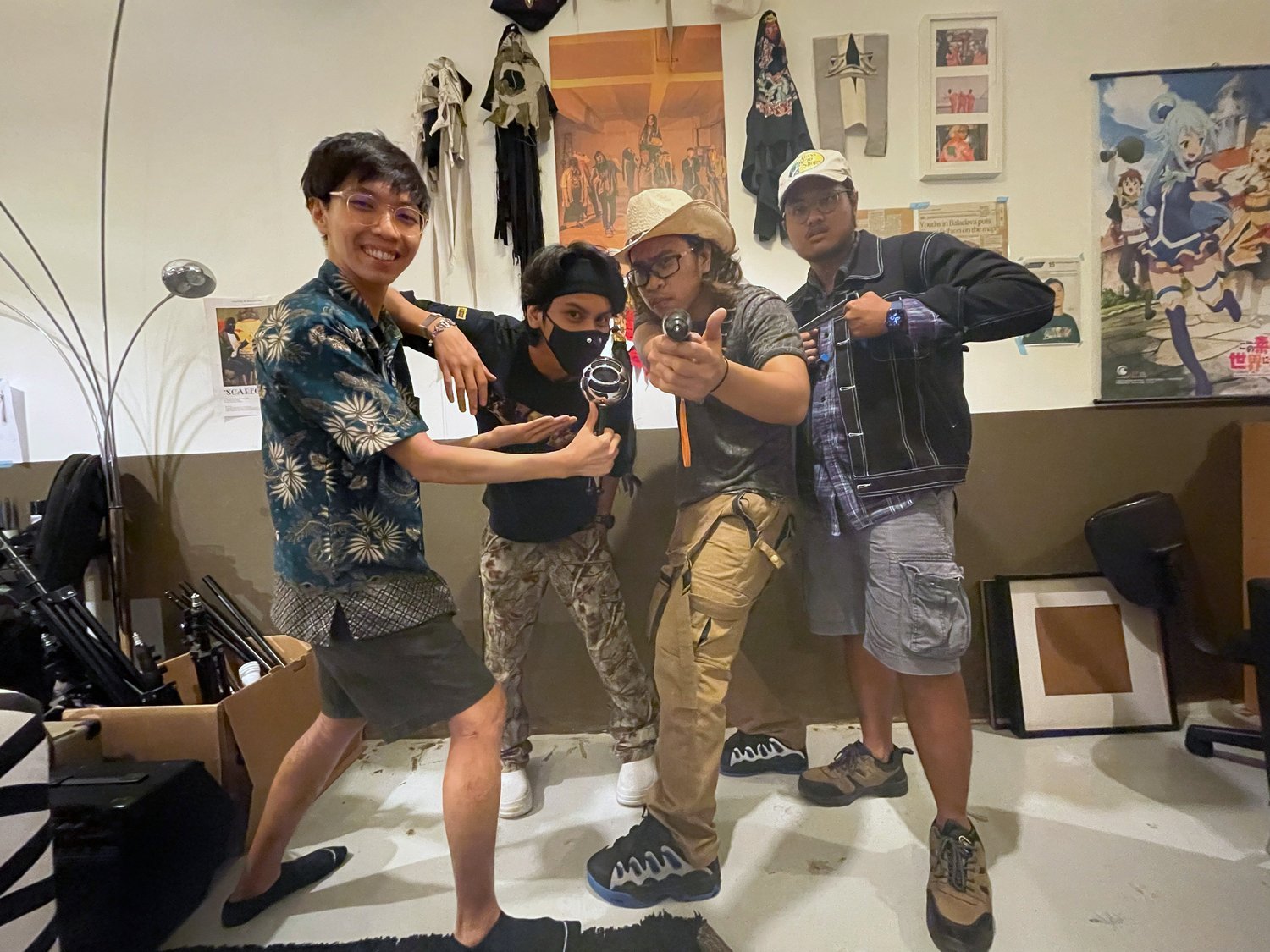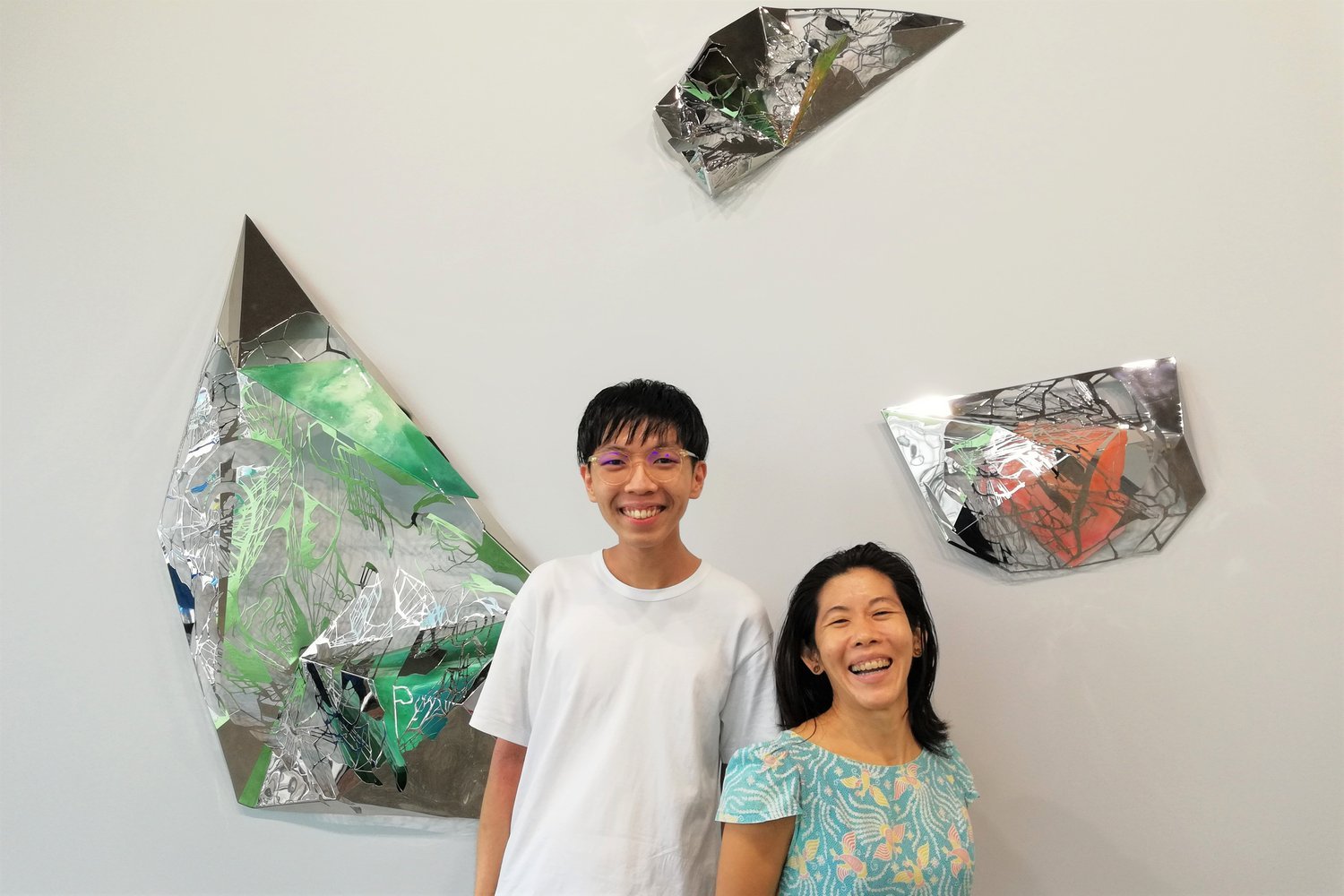Conversation with Isa Lorenzo and Rachel Rillo
From A to Zig-Zag: Silverlens Opens in New York
By Nadya Wang
Rachel Rillo and Isa Lorenzo. Photo by Joseph Pascual. Image courtesy of Silverlens.
From A to Zig-Zag is a podcast featuring creative practices in Southeast Asia, where I chat with guests about the foundations of their illustrious careers and the decisions and happenstance that have shaped them.
To launch the podcast’s second season, focused on creative partnerships, I speak with Isa Lorenzo and Rachel Rillo of Silverlens, who are about to open the doors to their gallery space in New York with two solo exhibitions: Martha Atienza’s ‘The Protectors’ and Yee I-Lann’s ‘At the Roof of the Mouth’.
In this conversation, Isa and Rachel talk about how they each got their start in the art world, the zig-zags they have gone through with Silverlens, and the exciting plans they are working on with their new permanent location. You can listen to the episode on Apple Podcasts, Soundcloud or Spotify.
If you would prefer to read the first half of the conversation, here is the excerpt:
Nadya: Let's start at point A. Could you speak about your education in school or elsewhere that planted the seeds for your creative practice?
Rachel: I trained as an artist, with a lot of art history. I majored in photography and studied in San Francisco at the Academy of Art. Our backgrounds in terms of art are very different.
Isa: I took a bit of a long route to get here. I did a medical degree in the Philippines, after which I decided to not pursue a career in medicine. But I did take the medical boards, because my mother reminded me that if Plan B fails, I need to have a plan A... which can become a Plan C. After that, I pursued a Master's degree in photography and media here in Parsons School of Design in New York, with the goal to become an artist, but that got sidelined with opening a gallery in 2004 in Manila. We had a brief but happy stint in Singapore, from 2012 to 2016. And now in 2022, we're opening in New York.
Façade of Silverlens New York. Image courtesy of Silverlens.
Nadya: You took a circuitous route, but there are always transferable skills. I wonder if you could talk about how your medical degree has served you in unexpected ways.
Isa: They’re two totally different worlds. I think that medical school teaches you big life skills, like patience, analysis, being very detail-oriented, but also taking into account the big picture, and what things mean. When you approach a patient or a disease, there are so many factors that are involved, and you're constantly trying to understand what things mean. So, I actually run the business side and the artist side of the gallery, and I run it like a clinic. It’s very structured; everything has a schedule, and everything is written down.
Rachel: There's a chart…
Isa: Every artist has a chart, every client and collector has a chart.
Rachel: I constantly have to remind her that no one is going to die, and say that it’s alright… The making and collecting of art on both ends are emotional and subjective. And there isn't a formula, say to cure it or to, you know, fix it.
Nadya: And Rachel, what do you bring to the table that balances Isa's skillsets?
Rachel: I have realised after many years that this gallery works because we have different personalities. I do the exhibitions, the art, taking care of the artworks, getting the exhibitions running, media… everything creative. The things that you see on social media are under my team, so I want to say I do the fun stuff.
Isa: Between us, I keep the lights on, and she makes sure everyone has food and a drink. That’s sort of the metaphor of how we split the tasks.
Nadya: Yes, you need that kind of counterbalance. I'm also wondering whether your work as a gallerist for each of you has also given you something for your artistic practice.
Martha Atienza, ‘Tigpanalipod 11° 02’ 06 .4” N 123° 36’ 24.1” E (2), The Protectors 11° 02’ 06 .4” N 123° 36’ 24.1” E (2)’, 2022, single-channel (00:37:41 min. loop), no sound, edition of 6 + 2 AP. Image courtesy of Silverlens.
Isa: I think it’s the other way around there. The artistic practices give us grounding for running the gallery. We treat our artists the way we would want to be treated as artists. And we treat our clients and collectors the way we want to be treated as clients and collectors. Over the years, our clients and our artists have become like an extended family. But yes, we would not have been doing this if we didn't start out as artists.
Rachel: I think a big thing also is dealing with artists' temperaments, right? We know when to back off, and we understand where they're at in their artistic cycles.
Isa: Yes. I think when people see a finished artwork, they just think it appeared. You know? It didn't. There's a whole support system. Well, there's an artist, there's the support system, there's the studio, materials, you know, everything to make that magic happen. And it's invisible. This magic, like magic – you don't see it.
Installation view of two solo exhibitions: ‘The Protectors’ by Martha Atienza and ‘At the Roof of the Mouth’ by Yee I-Lann. Image courtesy of Silverlens.
Nadya: Yes, exactly. I want to backtrack to 2004, Isa. What made you decide to found this gallery? And how has it developed since then? Could you chart its journey in broad strokes, including Rachel joining as co-directors in 2007.
Isa: All the good things that have happened to Silverlens, from its founding to now... We're born of crises. So whenever there's a crisis, I treat it as an opportunity. The first crisis in 2004 was that I wanted to find the gallery in Manila that I could work with as an artist. And I realised that there was no gallery that had professional support and structure. So I thought, oh, maybe I can do it. What a terrible idea! But I did it, and I kept doing it. I put up a gallery in my apartment. Worst idea ever. Don't ever live and work in the same place. Though it's really popular now to work from home. But when you have a business or you know, a work environment where the public can come into your home, it's not a good idea. So that lasted six months.
I then looked for a warehouse space that was cheap. Because you know, a lot of warehouses are big spaces and they're not built up. I found that, and asked Rach to come in. She was actually the first artist to show in the space in 2006. And then she ended up coming in full-time, joining me as directors in 2007…… In 2012, that's when we did Singapore. And it was very difficult. But we learned so much. And we made amazing friends. And that gave us sort of this germ, this seed of an idea that we could do it outside of the Philippines.
“We’re born of crises. So whenever there’s a crisis, I treat it as an opportunity. The first crisis in 2004 was, as an artist, I wanted to find the gallery in Manila that I could work with as an artist. And I realised that there was no gallery that had professional support and structure. So I thought, oh, maybe I can do it. What a terrible idea! But I did it, and I kept doing it.”
Rachel: I think it would have taken us a long time to get here, if it weren't for this stint in Singapore.
Yee I-Lann, ‘TIKAR/MEJAR 21’, 2018-2019, Bajau Sama DiLaut Pandanus weave with commercial chemical dye and matt sealant, 91 x 110cm, edition 1 of 2. Image courtesy of Silverlens.
Isa: Yeah. And then in 2016, we had a big fire. As you know, our storage facility burned down completely and we lost so much. I wanted to close and Rachel asked what we were going to do, and why I was thinking of closing. And then I just thought… this is terrible. But you know, it gave us the encouragement and energy of our artists. We realised that we were doing something more than just showing art, so we moved into a bigger space, a better space. And it’s been good since.
And then COVID! Huge crisis, right? It opened the doors to a US market, which we didn't even know existed, because we did not used to do anything in the US. But we looked at our social media, analytics, and our website visitorship as well as the studio visits that we were hosting from institutions, and curators in the US. A lot of it was coming from here.
Rachel: I think basically, the pandemic gave people time to look at “the others”. People meaning curators, people meaning the art audience. And I also made sure that our media team was beefed up, ready for the pandemic.
Isa: We tripled our media team, over the early days of the pandemic.
Rachel: It was, of course, minus the awful parts of the pandemic… I felt like it was such a great opportunity to have enough content to put out there because people had time to listen.
Isa: And we were also sitting on 17 years of content that we could reuse. So that was strategic, but we didn't know it. I mean, we just thought it was what we had to do. So the pandemic gave birth to Silverlens, New York.
Nadya: That sounds like such a journey… speaking of beefing up your media team, could you talk about all of the people who work together to make Silverlens possible?
Katey Acquaro. Photo by Carlos Martí. Image courtesy of Silverlens.
Isa: Rachel and I, we are who you see, but we have an incredible team in Manila and now in New York. We have about 15 full-time staff in Manila. And then we have four here in New York. And a whole army of other freelancers, video people, photographers, writers… And our artists! They are such a big part of our team because they've really embraced what we're doing, and they understand that it's necessary, which is so great, because can you imagine if they weren't on board? And it happens, you know, sometimes artists don't want to engage. But we've been very fortunate. We also have a strong sales and exhibitions group. We have a very strong media team, an accounting team, a baby army of art handlers in Manila…
Here, we have directors Katey Acquaro. And then we have Angela Guevara, who's our operations person. They have an assistant Joseph, and we have an intern, Maia. We’re constantly changing, adjusting; we're reviewing and seeing how to make things better, what works, what doesn't work. Running a gallery is a very dynamic job, especially since it's not just what you do on site. It's what you do online, which is what Rach does. It's what you do at the art fairs. It's what you do, you know, at the biennales, triennales, collaborations with other galleries, and people don't realise that there's just so many moving parts.
Isa Lorenzo, Martha Atienza, Yee I-Lann and Rachel Rillo, in front of Silverlens New York. Image courtesy of Silverlens.
Rachel: I think it's a plus that we are willing to pivot. Maybe it’s the nature of being Filipina. In the Philippines, every day is a surprise, sometimes good, sometimes not. So, you know, with storms coming in, with earthquakes, employees and employees' families, you know, a lot of responsibilities and a lot of things that happen. And so we try to be light-footed with what we’re doing, from the fairs to opening up a new space, to see how we can pivot according to the situation or audience, because everything's all new. And we like this feeling actually.
Isa: Yes. Super exciting.
Rachel: This I-don't-know-what's-going-to-happen feeling.
Isa: Like let's-jump-off-the-diving-board-and-see-where-we-land feeling.
Nadya: It’s good that you are both on the same page, taking all this risk and responsibility, which is not for everyone. Speaking about opening a gallery in New York, I think everyone is so excited about not only that a Philippine art gallery is opening, but that a Southeast Asian art gallery is opening in New York. It's incredible, because all we've seen is the wave coming into Southeast Asia. We don’t quite see it going the other way. You’re pioneers! And I’d like to ask: what has gone smoothly, and what has been more challenging?
To find out what Isa and Rachel had to say about the ups and downs of establishing a presence in New York and more, tune in to the second half of the podcast episode below on Soundcloud, Apple Podcasts, or Spotify. If you’d like to pick up right where you’ve left off, fast forward to 18:18. I am positive you will enjoy the full conversation as much as I did.
Thank you, Isa and Rachel! Wishing you the very best for the opening today.
Silverlens New York opens on 8 September 2022 with two solo exhibitions: ‘The Protectors’ by Martha Atienza and ‘At the Roof of the Mouth’ by Yee I-Lann. Both run till 5 November. More information here.
The excerpt has been edited.
This interview was republished on Art World Database (AWDB) on 8 February 2023 here. To view the profile of Silverlens on AWDB, click here.
















